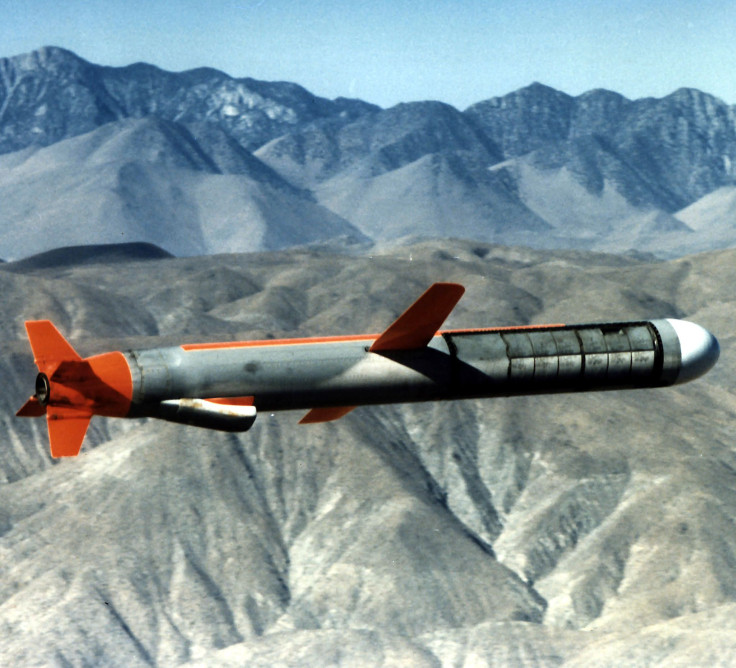Military Budget Cuts Force US Navy To Discontinue Raytheon's (RTN) Iconic Tomahawk Missile Purchases After 2015

Raytheon Company (NYSE:RTN), the maker of the U.S. Navy's Tomahawk cruise missiles, is working hard to keep the military from halting purchases of the missile, a threat to the giant military contractor's revenue that emerged from the Pentagon's cost-cutting plans.
The U.S. Navy said last week that, starting next year and after decades in service, it will no longer buy Tomahawks, which gained fame for their pinpoint accuracy during the first Gulf War.
At the heart of the Waltham, Mass. company's pushback against proposed Pentagon budget cuts between 2016 and 2019, which were outlined in the 2011 Budget Control Act, is a focus on how dropping the Tomahawk will hurt the more-than 100 suppliers in 24 states that supply parts for the iconic missile.
“There’s no question that suppliers will be affected, as would Raytheon. Once a production line is halted, it does take time to reassemble suppliers and restart the line. We are addressing these potential impacts with the U.S. Navy and with U.S. lawmakers,” Chris Sprinkle, Raytheon Tomahawk growth program manager, said Thursday.
U.S. defense contractors like Raytheon have been fearing the worst since major military cuts between 2016 and 2019 were outlined in the 2011 Budget Control Act. Since then, the military has been trying to find ways to avoid major sacrifices by trimming around the edges, like decommissioning an aircraft carrier and cutting the Army from 520,000 troops to around 440,000. It’s currently in the process of slimming down to 490,000 under a previously agreed deal.
Unfortunately for Navy Secretary Ray Mabus said that the service already has an arsenal of 4,000 tomahawks, nearly double the amount that has been actually used.
“When you add the Tomahawks that we plan to buy in 2015, it will carry us through any eventuality that we could foresee,” he told the Senate Armed Services Committee recently.
No decision has been made on what the next weapon will be, but studies have already begun, he added. There is a possibility that it could be outlined in the Department of Defense Analysis of Alternatives report in 2015.
While Raytheon did not name its suppliers, citing national security issues, it did not discount the possibility that the end of the Tomahawk program could cost losses among its suppliers and potentially some of the 68,000 Raytheon staff. Raytheon also supplies the U.K.’s military with Tomahawks missiles.
Prospects that there will be a delay in a replacement for the Tomahawk marks another front in Raytheon's fight to keep selling the missile to the Navy.
“We certainly don't want -- don't need -- a gap between the Tomahawk and the next weapon," Sprinkle said
The Navy will commence purchasing in 2019 whatever new weapon is chosen, but Raytheon questions that lag.
“There is significant risk with a three-year production gap and we are working with the U.S. Navy to help them plan their way ahead,” said Sprinkle. “The Navy is aware of how many Tomahawks they have and what their requirements are. Tomahawk has always been the nation's weapon of choice. In order maintain, produce additional (missiles), recertify and conduct unscheduled maintenance, it is important to maintain a production line and a healthy supply base."
Raytheon also is marshaling support on Capitol Hill for continuation of the Tomahawk program.
Navy supporters on Capitol Hill grilled Pentagon officials last week about Tomahawk funding cuts. Navy acquisitions chief Sean Stackley told members of the House Armed Services Committee that the termination of missile production might be reconsidered.
In 2016, “I guarantee you we will revisit the question of whether the time is right to cease production of Tomahawks,” he said
The current inventory of 4,000 is adequate for the time being, Stackley said. “What we have got to get to is that next generation weapon.”
The Navy has said that the current stock of Tomahawks, each costing $1.45 million, will need to be upgraded at some point.
“The U.S. Navy is still planning Tomahawk modernization, which includes communication suite upgrades and potential sensor and warhead improvements, said Sprinkle. “These upgrades would enable the missile to hit moving targets at sea and on land. Additionally, warhead improvements would give mission planners more options for explosive force.”
© Copyright IBTimes 2024. All rights reserved.





















